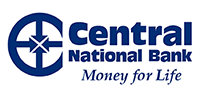
It’s Grandparent’s Day, and while we love all the grandmas and grandpas out there, not everyone feels the same way. Unfortunately, financial abuse of the elderly population is a growing concern.
In fact, the Executive Director of the National Adult Protective Services Association, Kathleen Quinn, said it was a “rampant, largely invisible, expensive and lethal” problem. While financial elder abuse is a complex topic, this blog covers the basics so you know what it is, how to spot it and what to do about it.
What is it?
According to the National Committee for the Prevention of Elder Abuse, elder financial abuse can include a variety of activities. These include:
- Taking money or property without permission
- Forging a victim’s signature
- Using deception, coercion or undue influence to manipulate an older person financially
- Using or taking possessions without permission
- Scams or fraud such as using exaggerated claims to get victims to send money
What are the signs?
While this can be a hard crime to detect, there are some common indicators to watch out for when it comes to protecting your loved ones. These by no means guarantee elder financial abuse is occurring, but they are things to look for.
- Banking statements and information are no longer sent to the elder’s residence
- Appearance of new “best friends” or other suddenly close people in a victim’s life
- Unusual account activities, including large or frequent withdrawals and transfers

Who are the victims?
While financial abuse can happen to anyone, elderly people who are isolated, lonely, or have physical or mental disabilities are especially at risk. This is also true for those who are unfamiliar with their financial matters or are dependent on others for help.
Individuals who are taken advantage of often do not report this as a crime to law enforcement. Financial abuse can lead to serious consequences including depression, inability to hire needed care and severe financial setbacks.
Who are the abusers?
While strangers are often the perpetrators behind scams and frauds, unfortunately financial abusers are often trusted people. These can include family members, neighbors, friends, caretakers, bank employees and lawyers.
Professional scam artists often run cons such as:
- Lottery scam: Claiming you’ve won the lottery, now all you need to do is send money to cover taxes
- Home repair scam: Offering to conduct home repairs cheaply
- Charity scam: Pretending to raise money for a good cause
In contrast, family members and trusted individuals with close access to the elderly typically exploit them through different means. For instance:
- Taking Power of Attorney as license to use the victim’s money for personal reasons
- Taking advantage of joint bank accounts
- Refusing to provide care or medical services in order to keep the victim’s assets available
For a more extensive list of common ways the elderly are often financially abused, you can visit the National Adult Protective Services Association website.

How can you help?
If you suspect that a loved elder in your life is being financially abused, you should contact your local Adult Protective Services, law enforcement and the victim’s financial institutions. If the suspected abuser is a trusted individual in the victim’s life, steps should be taken to remove them if possible, or at least limit their abilities to be financially involved. Additionally, a toll-free help line by the Financial Industry Regulatory Authority (844-57-HELPS, or 844-574-3577) is available for older people to call for information and advice regarding brokerage accounts and statements.
Ultimately, the bottom line is to remain aware of financial elder abuse and be vigilant for any signs of unusual or suspicious activity in your loved one’s life. If you have any other tips or advice in dealing with elder financial abuse, please let us know in the comments below!
